Environmental characteristics associated with the presence of the Spinetail devil ray (Mobula mobular) in the eastern tropical Pacific
August 2019
Nerea Lezama-Ochoa , Martin A. Hall, Maria Grazia Pennino, Joshua D. Stewart, Jon López & Hilario Murua
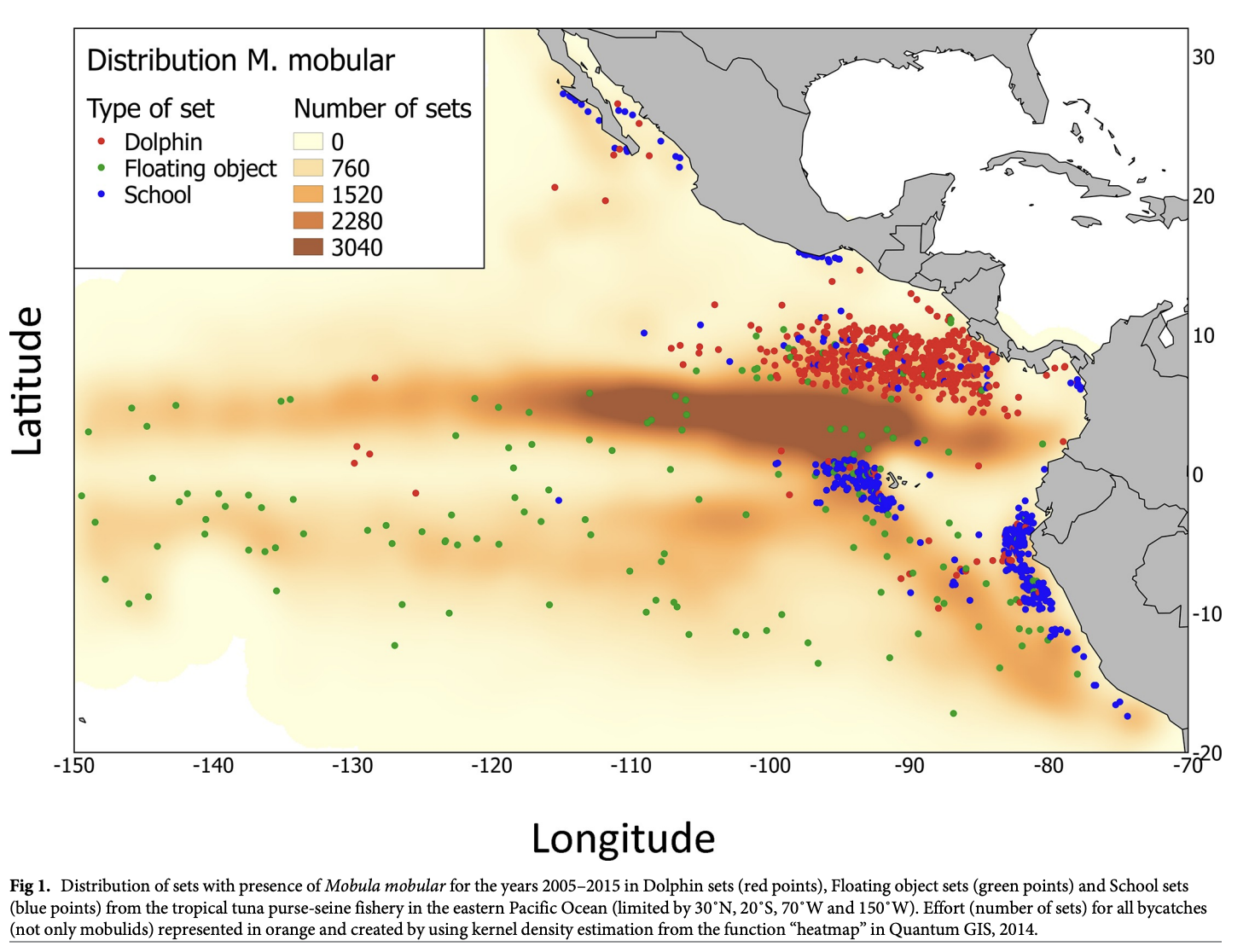

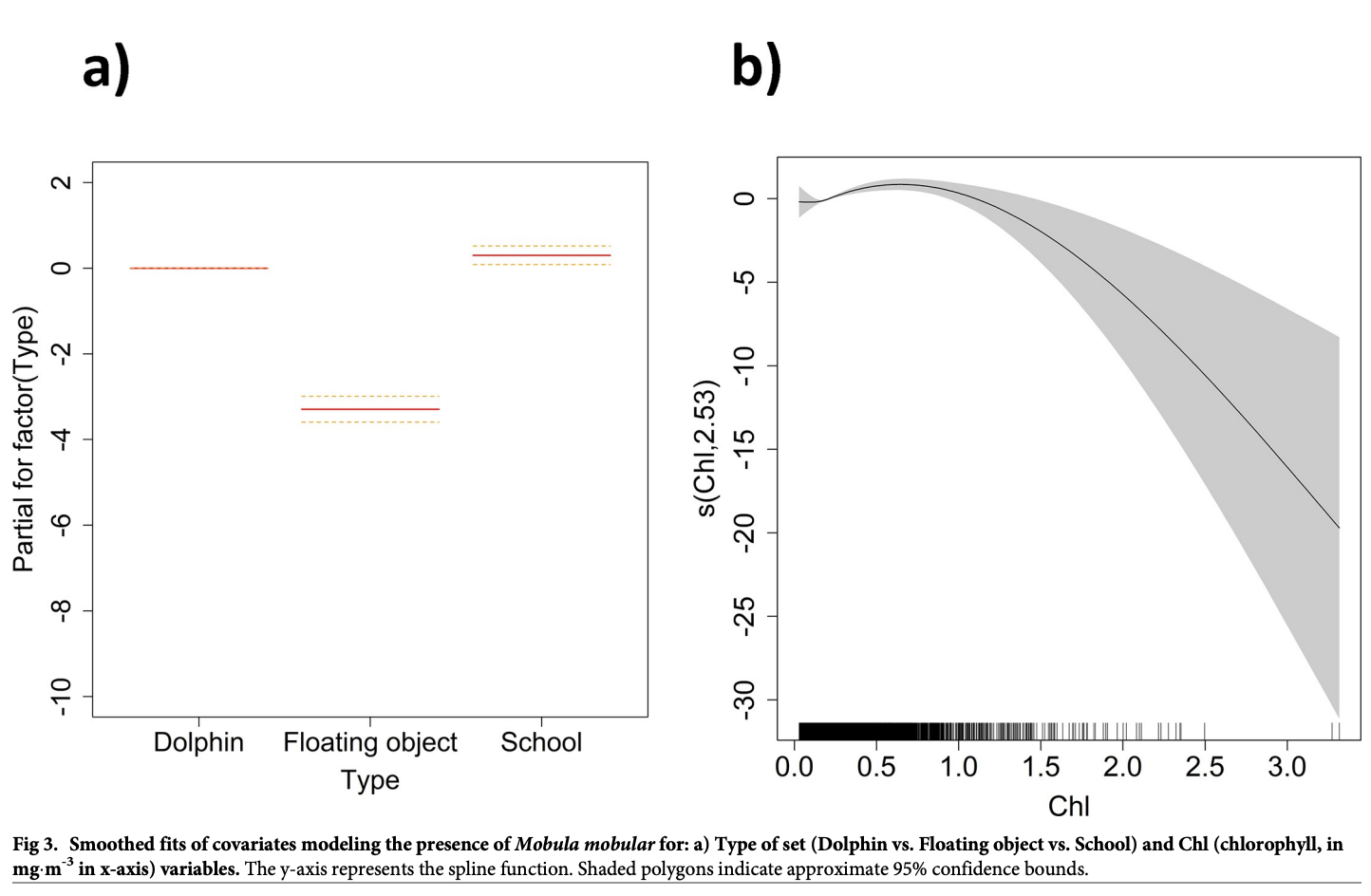
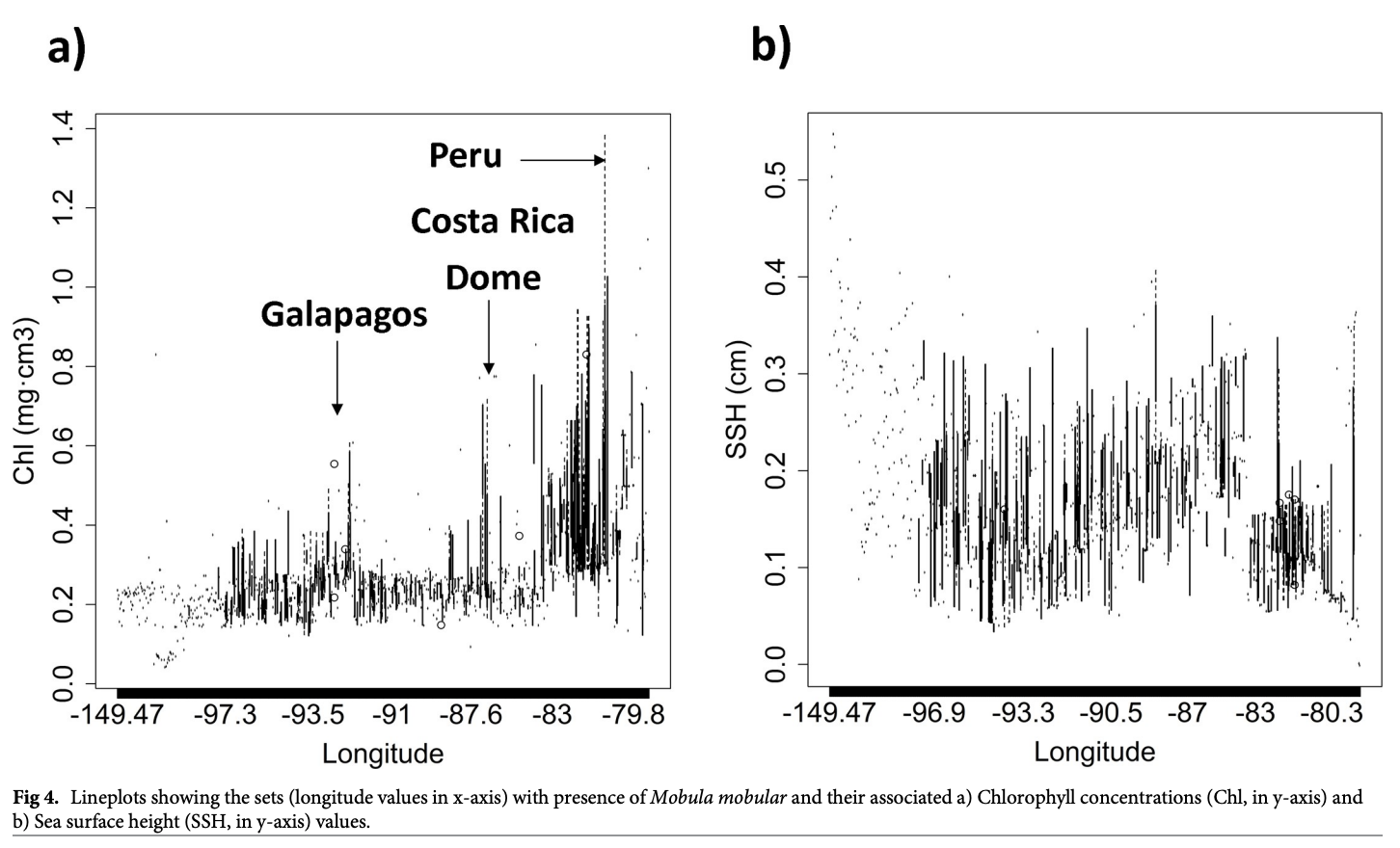
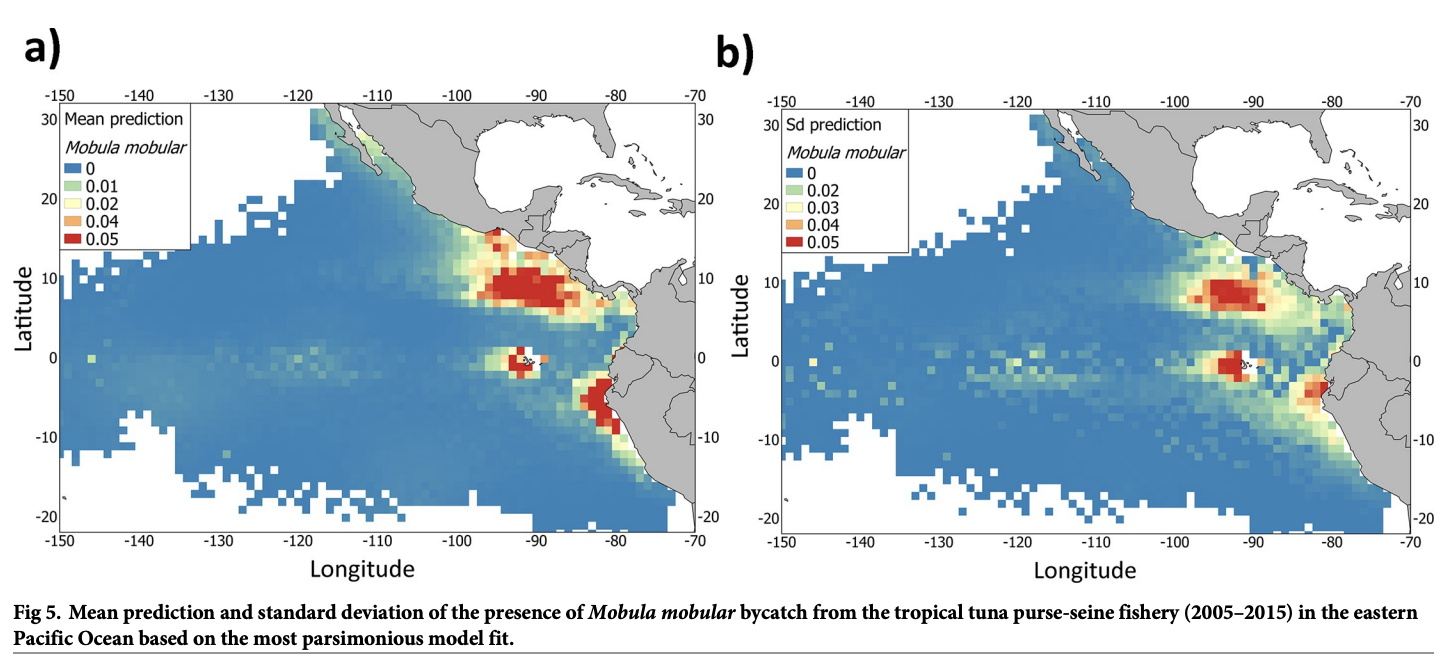
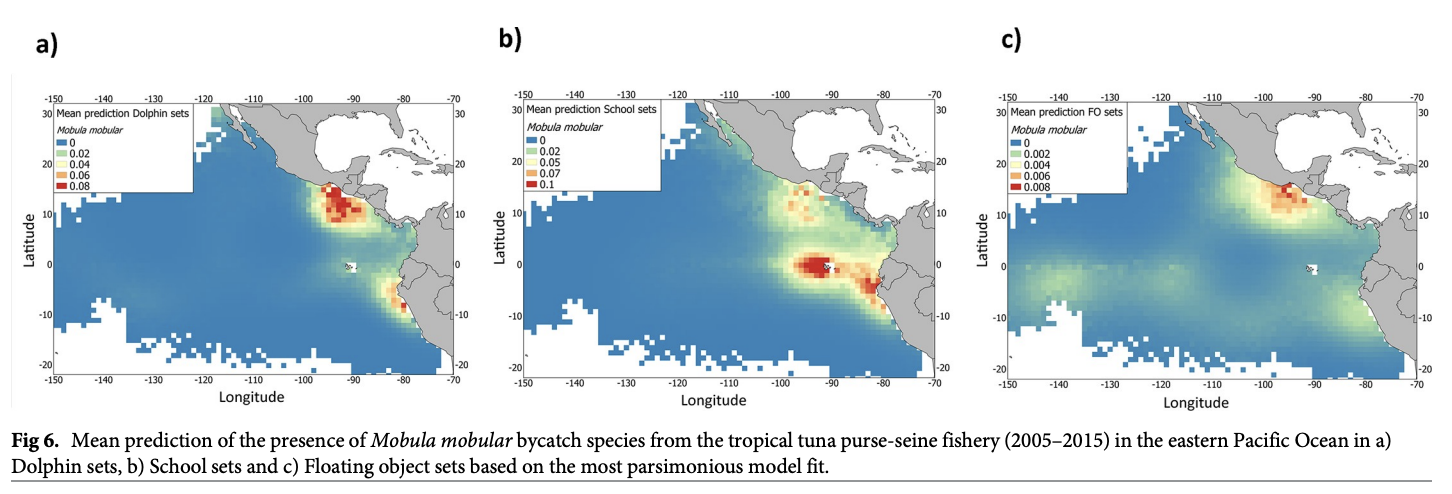

Summary: In the eastern Pacific Ocean, the tropical tuna purse-seine fishery incidentally captures several mobulid bycatch species, including Spinetail devil rays (Mobula mobular). This study used Generalised Additive Models to analyse fisheries observer data and identified chlorophyll concentration, sea surface height, geographic location, and set type as significant factors affecting M. mobular presence. The species was more likely to be found in productive upwelling areas, with hotspots near northern Peru, Galapagos, and Costa Rica Dome. This information can aid in dynamic spatial management to protect mobulid rays and ensure their population's sustainability.
Abstract
“In the eastern Pacific Ocean, the tropical tuna purse-seine fishery incidentally captures high numbers of five mobulid bycatch species; all of which are classified as mortalities by the Inter-American Tropical Tuna Commission due to uncertainties in post-release mortality rates. To date, the factors (operational or environmental) leading to the capture of these species by the fishery have not been well studied. Here, we developed Generalized Additive Models for fisheries observer data to analyze the relationships between the presence/absence of Mobula mobular bycatch and oceanographic conditions, the spatial and temporal variability in fishing location, and the set type (associated with dolphins, free-swimming tuna schools or floating objects). Our results suggest that chlorophyll concentration and sea surface height are the most important variables to describe the presence of M. mobular in conjunction with geographic location (latitude and longitude) and set type. Presence of the species was predicted in waters with chlorophyll concentrations between 0.5–1 mg·m-3 and with sea surface height values close to 0; which indicates direct relationships with productive upwelling systems. Seasonally, M. mobular was observed more frequently during December-January and August-September. We also found the highest probability of presence observed in School sets, followed by Dolphin sets. Three areas were observed as important hotspots: the area close to the coastal upwelling of northern Peru, the area west to Islands Colon Archipelago (Galapagos) and the area close to the Costa Rica Dome. This information is crucial to identify the mobulids habitat and hotspots that could be managed and protected under dynamic spatial management measures to reduce the mortality of mobulid rays in the eastern Pacific purse-seine fishery and, hence, ensure the sustainability of the populations of these iconic species.”
Author Affiliations
Inter-American Tropical Tuna Commission, Bycatch Program
AZTI-Tecnalia, Marine Research Division
Instituto Español de Oceanografía (IEO)
Scripps Institution of Oceanography
The Manta Trust
International Seafood Sustainability Foundation (ISSF)
Funded by
Basque Government (Programa Posdoctoral de Perfeccionamiento de Personal Investigador Doctor)
